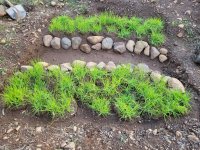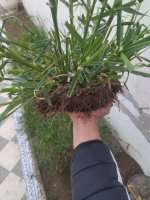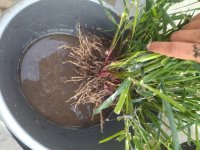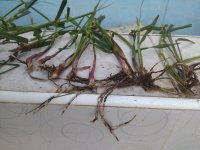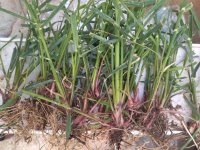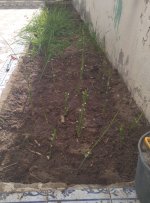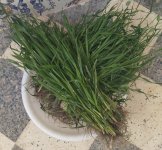Thanks for all your contribution and collaboration Sidhi!
Similar to your experience, the power of my brachy experiences with winter harvests were not comparable with previous spring harvested plants. I might still be impressed and satisfied because of my sensitivity. But the ego dissolution was weak and open eyed visual distortions were completely absent unlike my spring brachy experiences.
As you know I did not have luck with the two wild strains of potent aquaticas that I found. One was insanely potent with DMT but caused disturbing tyramine side effects with rue. The other had almost negligible side effects, was 5 dominant and that was intriguing, but somehow it suppressed the rue and all psychological processes, leaving you with a pleasant but ultimately not useful 5 meo expansive emptiness. The latter (5 dominant) strain seems likely to be of the same character if ingested alone, but the first strain could possibly be healthy and interesting without maoi as a smoked extract. I don't know if I will ever have a space in my life to explore aquatica again.
For ayahuasca analogues, brachy is the best phalaris candidate. Spirit-wise it is reminiscent of Chacruna and this is unique among all the grass species I have experienced, all being of a very different character. Unfortunately it is not perennial and also grows less vigorusly than aquatica. But the cultivation technique can be mastered and it could have a lot of potential with dedication and patience. I actually ran into a field full of brachystachys almost as tall as my height many years ago when I was not ready to start exploring it. It was probably on steroids because of artificial fertilizers. It's a glimpse of what is possible.
I am not really sure how well this years cultivation is going. I don't remember blades drying out last time as is happening this year despite enough watering. I initially thought it is rootburn from too much manure tea but I don't think so anymore as it has been a long time since fertilizing and after so much rain the drying continues. It is not too bad, but still it is present. So here is my last cultivation's grass in March.
Phalaris Project - Ayahuasca - Welcome to the DMT-Nexus It appears as a success and I don't know if I will reach that this year. Last time I had used soil from under an oak tree as suggested for nutrient density by a local farmer. This year I just used soil from an alfalfa field that could be considered high in clay. Also last time it rained a lot and this year seems to be perhaps the dryest for the last 100 years. I am considering collecting rainwater now. Also, nettle tea is a popular fertilizer rich in many minerals, and I just found out it is also rich in nitrates. Will give it a try. Finally, last time the grass was in a greenhouse but this year is so warm I did not feel the need to do it but probably it will help if I do.
The effect of rainwater is seen almost instantly. The grass becomes erect and grows considerably by the next day. Rainwater is said to have up to 4.5mg/L of nitrate. So it seems that giving the grass a little nitrates is more effective than giving it a ton of nitrogen in other forms.
Just read alfalfa is also rich in nitrates! How ironic that I have not been aware that I planted the brachys among a sea of fertilizer!
Wow, another bonus: alfalfa has triacontanol, a plant growth promoting hormone.
And then there is horsetail found abundantly in the local forests, it's tea said to boost plant health and growth also.
Alright, I have a new formula and I am set to go.

